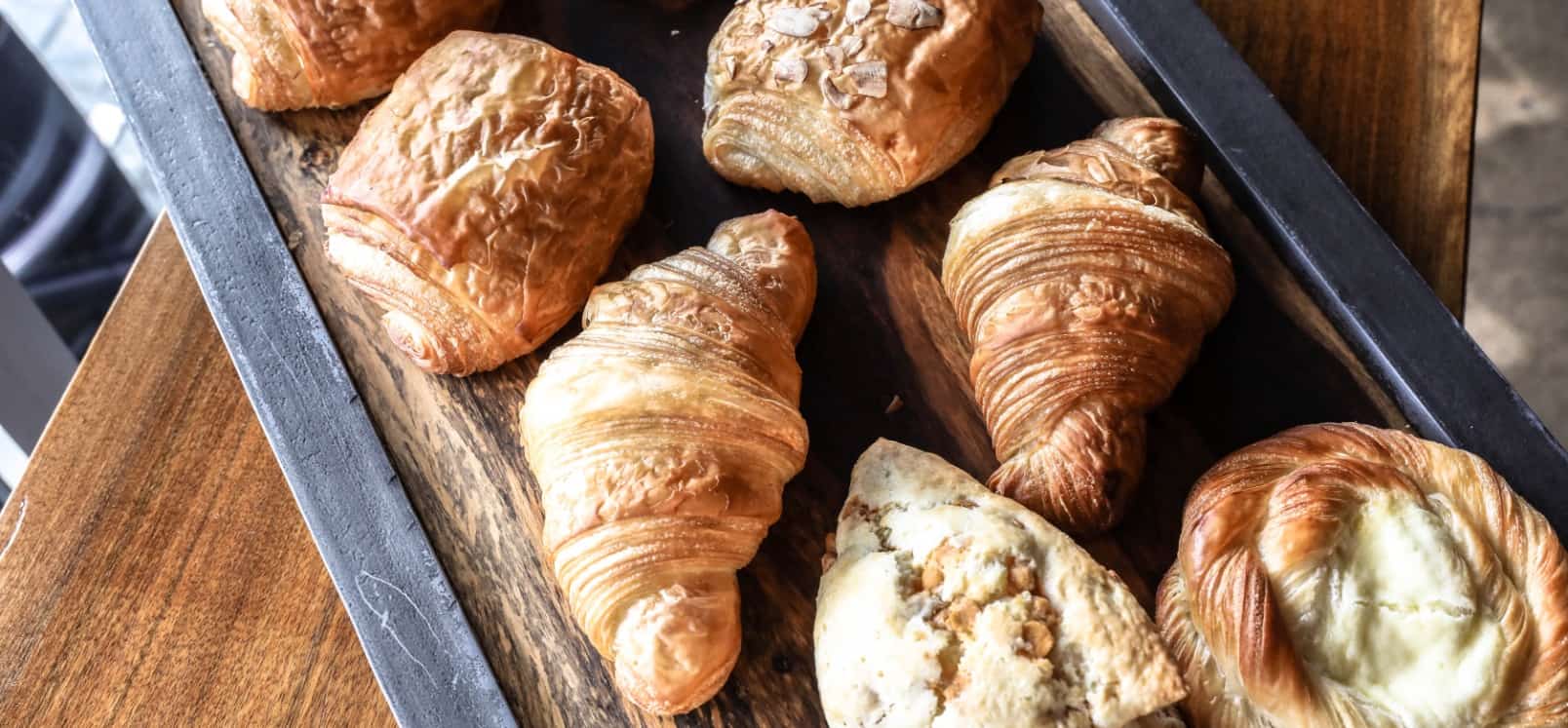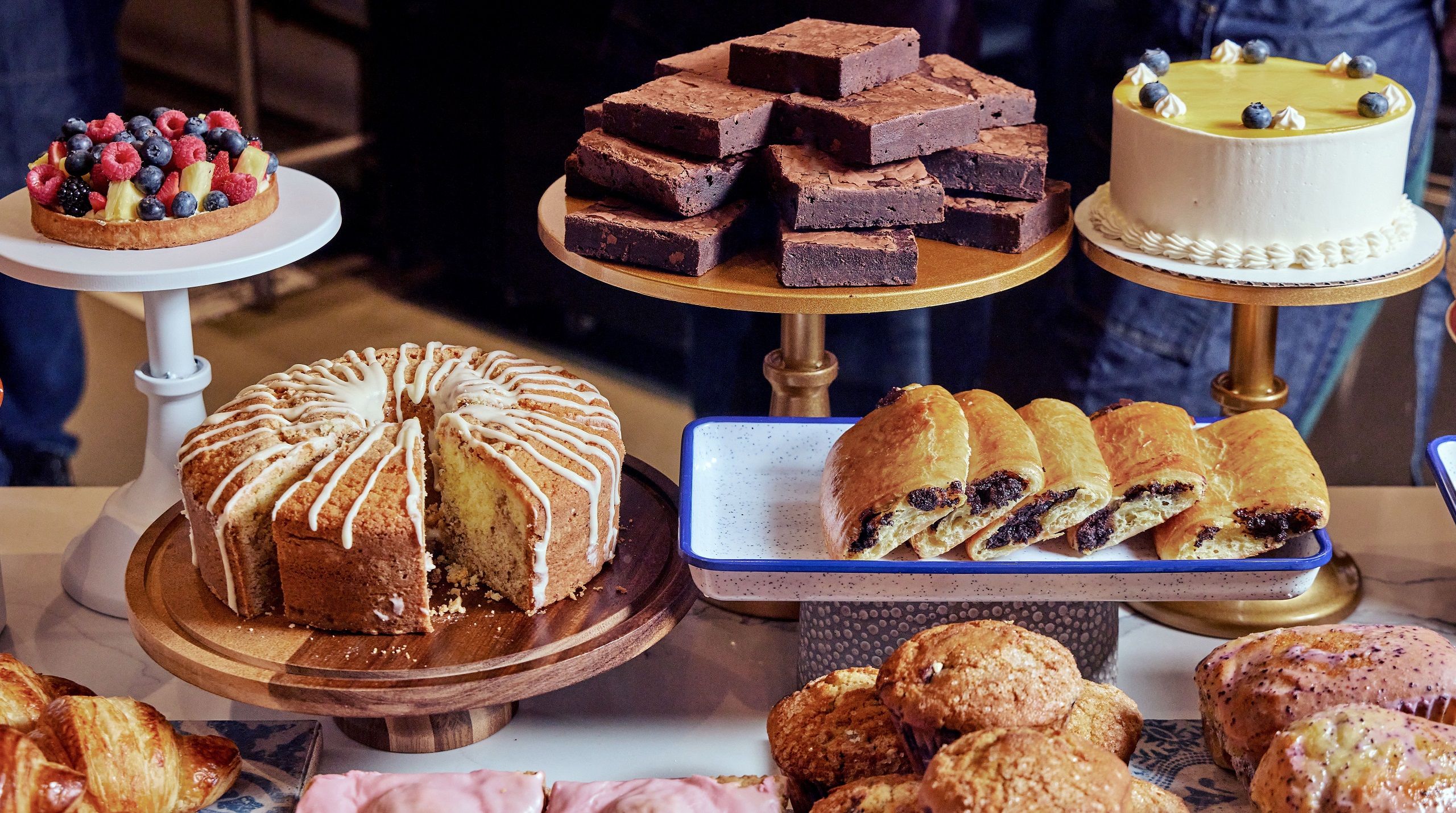Comprehending the Art of Pastry Shop Products: From Newly Baked Breads to Tempting Pastries and Finger Foods
The complex art of pastry shop items encompasses a spectrum of methods and active ingredients that change standard parts into culinary delights. From the science behind the ideal loaf of bread, where fermentation and gluten advancement play essential duties, to the skill required for creating layered pastries, each aspect reveals a compelling narrative of craftsmanship. Furthermore, the adaptability of finger foods shows exactly how taste and appearance can be skillfully incorporated to involve varied preference choices. As we explore these elements, one might wonder: what underlying concepts control the success of these precious creations?
The Science of Bread Making
At the heart of every loaf of bread exists an interesting interaction of chemistry and biology. The procedure of bread making begins with the mix of flour, salt, yeast, and water-- each component playing a vital duty in the last product.
Yeast, a living microorganism, ferments the sugars existing in the flour, creating co2 and alcohol while doing so. The co2 gas develops bubbles in the dough, causing it to increase and establish a light texture. The temperature and moisture throughout fermentation significantly affect yeast activity and, subsequently, the bread's flavor and texture.

Mastering Bread Techniques
Exactly how can one achieve the delicate equilibrium of texture and flavor that defines remarkable bread? Mastering pastry strategies requires a deep understanding of active ingredients, methods, and the scientific research behind them. Fundamental to this craft is the selection of high-grade components-- flour, butter, sugar, and eggs-- each playing a crucial function in the last product's flavor and structure.
The strategy of lamination, which involves folding layers of dough and butter, produces the desired flakiness in pastries like croissants and smoke bread. Accuracy in temperature is crucial, as butter needs to remain chilly to make sure optimum layers. Proper mixing methods, such as the creaming technique for cakes, guarantee even unification of air and fat, resulting in a light and ventilated crumb.
Moreover, maintaining the best moisture degrees throughout cooking can dramatically affect the result, guaranteeing that pastries climb appropriately and achieve that golden-brown finish. Lastly, the art of pastry additionally requires patience and technique; each effort boosts one's ability and understanding of the detailed equilibrium called for to develop alluring pastries that delight the senses. Mastery in these techniques ultimately differentiates a competent pastry chef from an amateur.
Sorts Of Finger Foods
The globe of culinary delights expands past pastries to encompass a vast selection of finger foods, which are commemorated for their comfort and convenience. These bite-sized treats are ideal for social gatherings, supplying an array of tastes and structures that deal with varied tastes.

On the sweeter side, miniature tarts and bite-sized cupcakes offer a delightful surface to any type of dish, attracting those with a craving for sweets. Cheese and charcuterie boards offer as an innovative selection, permitting visitors to tailor their attacks with a variety of meats, nuts, fruits, and cheeses.
Taste Profiles in Cooking
Cooking is a complex dancing of flavor profiles that combines wonderful, mouthwatering, and umami notes to produce a harmonious experience for the palate. Recognizing these accounts is crucial additional hints for bakers looking for to raise their developments.
Sweetness frequently functions as the structure in baked items, with sugars, fruits, and all-natural sweeteners enhancing taste deepness. Components such as chocolate and sugar introduce complex sweet notes that can either control or enhance various other flavors. Conversely, savory components, usually discovered in breads and pastries, give balance and comparison. Components like cheeses, herbs, and seasonings can transform a straightforward dough right into a multifaceted taste experience.
Umami, regularly ignored in cooking, plays a considerable duty in enriching tastes. Ingredients such as aged cheeses, fermented products, or also certain nuts add to a savory depth that boosts general preference.
Furthermore, the interplay of acidity from active ingredients like buttermilk or citrus zest can brighten flavors, using a revitalizing counterpoint to sweetness. By thoughtfully integrating these flavor profiles, bakers can craft products that reverberate with varied tastes buds, creating an unforgettable culinary experience. Inevitably, grasping taste profiles is crucial to technology on the planet of baking.
Necessary Baking Devices and Ingredients
Recognizing flavor profiles in cooking sets the stage for choosing the right tools and components that assist in the production of remarkable baked goods. The foundation of successful cooking hinge on having essential tools at your disposal. Key items consist of blending bowls, gauging mugs, and spoons for precision, in addition to a strong stand mixer or hand mixer for uncomplicated mixing. A trusted collection of baking pans-- such as sheet pans, loaf frying pans, and cake frying pans-- is vital for accomplishing preferred shapes and textures.
In terms of ingredients, top quality matters significantly. Flour offers as the backbone of the majority of dishes; choosing the appropriate type-- be it all-purpose, bread, or bread flour-- can considerably impact the end result. Sugar not only sweetens yet likewise contributes great site to appearance, while eggs serve as binders and raising agents. Cooking powder and cooking soda are essential for developing lift in pastries and cakes.
In addition, including flavor enhancers like vanilla essence, spices, and citrus enthusiasm can elevate your developments. By making certain access to click to read more these essential devices and ingredients, bakers can confidently get started on their cooking journey, crafting a diverse variety of delightful baked goods.
Final Thought
Mastery in bread production, pastry preparation, and finger food discussion discloses the complex connections between processes and ingredients. Bakery Catering Maddington. Exploring diverse flavor accounts enhances the baking experience, while important devices and active ingredients offer the structure for success.
Exactly how can one achieve the fragile balance of texture and taste that defines phenomenal pastry? Fundamental to this craft is the option of premium active ingredients-- flour, butter, sugar, and eggs-- each playing an essential role in the final item's taste and texture.

Understanding flavor profiles in cooking collections the phase for picking the right devices and ingredients that facilitate the creation of outstanding baked items. Discovering varied taste profiles enhances the baking experience, while vital tools and components offer the structure for success.